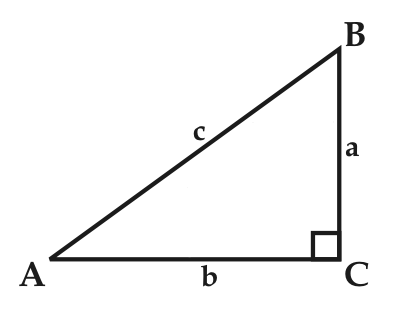Area between two curves in a set limit - both curves below x-axis - what should I do?
I know that normally area between two curves is integration of upper curve with limits minus integration of lower curve with limits.
In this situation both curves are below x-axis. I will get negative area and then need to drop minus to get the answer.
I've tried taking integration of the lower curve minus integration of higher curve and I get rubbish.
Anyone help?

In this situation both curves are below x-axis. I will get negative area and then need to drop minus to get the answer.
I've tried taking integration of the lower curve minus integration of higher curve and I get rubbish.
Anyone help?

(edited 12 years ago)
Scroll to see replies
Original post by in_your_face
this is the question. part a is simple.
part b - rubbish.
I know we should use sin2x=2sinXcosX,
but if tan = sin/cos = 3/4 why do they get the answer sinX= 3/5 and cosX = 4/5
I know this is possible, but how do they arrive to this answer, where does the 5 come from? It could easily be 3/10 or 3/7 for all I know.
Anyone explain/help/solve?
I have the answer only from the past paper, but haven't got a clue on how to do it.
thanks.

this is the question. part a is simple.
part b - rubbish.
I know we should use sin2x=2sinXcosX,
but if tan = sin/cos = 3/4 why do they get the answer sinX= 3/5 and cosX = 4/5
I know this is possible, but how do they arrive to this answer, where does the 5 come from? It could easily be 3/10 or 3/7 for all I know.
Anyone explain/help/solve?
I have the answer only from the past paper, but haven't got a clue on how to do it.
thanks.
i am not sure exactly whats the question, but if the question is
if tan = sin/cos = 3/4 why do they get the answer sinX= 3/5 and cosX = 4/5
then, think of a right angled triangle.

tan A = 3/4
do you know SOH CAH TOA? (sine=opposite/hypothenuse,cos=adjacent/hypothenuse, tan=opposite/adjacent)... opposite = length of line opposite to the angle. hypothenuse length = opposite right angle (longest length). adjacent=length of line that is at the angle x and 90degrees (if you know what i mean)
well tan A = opposite lenght/adjacent length = a/b
sincce tan A = a/b = 3/4 ... A=3, B=4.
using pythangoras you can find C = sq root (3^2+4^2) = 5
now sin A = opposite length/hypothenuse length = a/c = 3/5
and cos A = adjacent length/hypothenuse length = b/c = 4/5
hope you understand :/
Original post by argrao
i am not sure exactly whats the question, but if the question is
if tan = sin/cos = 3/4 why do they get the answer sinX= 3/5 and cosX = 4/5
then, think of a right angled triangle.

tan A = 3/4
do you know SOH CAH TOA? (sine=opposite/hypothenuse,cos=adjacent/hypothenuse, tan=opposite/adjacent)... opposite = length of line opposite to the angle. hypothenuse length = opposite right angle (longest length). adjacent=length of line that is at the angle x and 90degrees (if you know what i mean)
well tan A = opposite lenght/adjacent length = a/b
sincce tan A = a/b = 3/4 ... A=3, B=4.
using pythangoras you can find C = sq root (3^2+4^2) = 5
now sin A = opposite length/hypothenuse length = a/c = 3/5
and cos A = adjacent length/hypothenuse length = b/c = 4/5
hope you understand :/
if tan = sin/cos = 3/4 why do they get the answer sinX= 3/5 and cosX = 4/5
then, think of a right angled triangle.

tan A = 3/4
do you know SOH CAH TOA? (sine=opposite/hypothenuse,cos=adjacent/hypothenuse, tan=opposite/adjacent)... opposite = length of line opposite to the angle. hypothenuse length = opposite right angle (longest length). adjacent=length of line that is at the angle x and 90degrees (if you know what i mean)
well tan A = opposite lenght/adjacent length = a/b
sincce tan A = a/b = 3/4 ... A=3, B=4.
using pythangoras you can find C = sq root (3^2+4^2) = 5
now sin A = opposite length/hypothenuse length = a/c = 3/5
and cos A = adjacent length/hypothenuse length = b/c = 4/5
hope you understand :/
aaaaaah, well I thought about the triangle being right-angled, but it's not mentioned in the question. So we were meant to deduce it from sin and cos - I know that we use cos and sin not only in right-angled triangles, so I got confused. sin and cos as relationship between sides is for right-angled triangles only, but we can use sine and cosine rule with any triangles, right?
Thanks a lot for the explanation.
Original post by in_your_face
aaaaaah, well I thought about the triangle being right-angled, but it's not mentioned in the question. So we were meant to deduce it from sin and cos - I know that we use cos and sin not only in right-angled triangles, so I got confused. sin and cos as relationship between sides is for right-angled triangles only, but we can use sine and cosine rule with any triangles, right?
Thanks a lot for the explanation.
Thanks a lot for the explanation.
yup, sine and cosine rules can be used with any triangles, but when you know sin x = a/b or somefin, you can use the right angle triangle to find cos x and tan x, and vice versa..

Original post by argrao
yup, sine and cosine rules can be used with any triangles, but when you know sin x = a/b or somefin, you can use the right angle triangle to find cos x and tan x, and vice versa.. 

great, thanks.
Original post by argrao
yup, sine and cosine rules can be used with any triangles, but when you know sin x = a/b or somefin, you can use the right angle triangle to find cos x and tan x, and vice versa.. 

can I ask you an unrelated question since I opened a thread anyway?
If we have 3^(log34) does it just equal 4?
So is there a general formula x^(logxY) = Y ?
Thanks
Original post by in_your_face
If we have 3^(log34) does it just equal 4?
So is there a general formula x^(logxY) = Y ?
Thanks
If we have 3^(log34) does it just equal 4?
So is there a general formula x^(logxY) = Y ?
Thanks
yes
anyone help?
argh
Original post by RK92
break up the function:
4cos((3X+2)/6) - 1
the 4 doesnt affect period, just the maximum and minimum values
the -1 doesnt affect period either, it just shifts the graph down one
looking inside the cos, youve got:
cos( (3x+2)/6 )
this could be written as cos(3x/6 + 2/6)
does that help?
4cos((3X+2)/6) - 1
the 4 doesnt affect period, just the maximum and minimum values
the -1 doesnt affect period either, it just shifts the graph down one
looking inside the cos, youve got:
cos( (3x+2)/6 )
this could be written as cos(3x/6 + 2/6)
does that help?
yes, your explanation is very helpful, thanks.
i've got another question, anyone?
Original post by in_your_face
i've got another question, anyone?
Just state what it is!
Original post by baffled_mathman
Just state what it is!
it's at the top, sorry.
I'm trying to avoid spamming maths forum with new threads every time I get stuck on some question.
My maths exam is in a week and I'm rubbish at maths. I'm glad people help me out here

Original post by in_your_face
it's at the top, sorry.
I'm trying to avoid spamming maths forum with new threads every time I get stuck on some question.
My maths exam is in a week and I'm rubbish at maths. I'm glad people help me out here
I'm trying to avoid spamming maths forum with new threads every time I get stuck on some question.
My maths exam is in a week and I'm rubbish at maths. I'm glad people help me out here

You don't get where the limits came from?
Looks like they forgot to include them in the original question.
Original post by baffled_mathman
You don't get where the limits came from?
Looks like they forgot to include them in the original question.
Looks like they forgot to include them in the original question.
oh, damn. Thanks for telling me that. I was starting to think I'd missed some major rule of integration.
help! please see original post.
Thanks.
Remember that the integral of sin x is - cos x
and when you integrate sin (2x-3), you have to differentiate the bracket to get 2 and divide the integral by it thus you get -1/2 cos (2x-3) + C
I think you're confused about the 2x-3 being a function of the sin... imagine y=2x-3, then the question is asking for the integral of sin y, not of sin (2x) - 3...
and when you integrate sin (2x-3), you have to differentiate the bracket to get 2 and divide the integral by it thus you get -1/2 cos (2x-3) + C
I think you're confused about the 2x-3 being a function of the sin... imagine y=2x-3, then the question is asking for the integral of sin y, not of sin (2x) - 3...
(edited 12 years ago)
Original post by sohanshah
Remember that the integral of sin x is - cos x
and when you integrate sin (2x-3), you have to differentiate the bracket to get 2 and divide the integral by it thus you get -1/2 cos (2x-3) + C
I think you're confused about the 2x-3 being a function of the sin... imagine y=2x-3, then the question is asking for the integral of sin y, not of sin (2x) - 3...
and when you integrate sin (2x-3), you have to differentiate the bracket to get 2 and divide the integral by it thus you get -1/2 cos (2x-3) + C
I think you're confused about the 2x-3 being a function of the sin... imagine y=2x-3, then the question is asking for the integral of sin y, not of sin (2x) - 3...
but if this is not integrating function of a function, why should we divide by 2?
if 2x-3 can be substituted by y, then it's integrating sinY = -cosY + C.
Why do we divide by 2, but don't put (2x-3) to the power of 2? I thought that was the principle of integration - we divide by the new power.
Quick Reply
Related discussions
- A-level Maths, Integration, Finding area between curves & Lines.
- Volumes of revolution
- Parametrics
- HNC Maths Question Hand Drawn Sketch
- Physics velocity question
- Finding values of k for two distinct real roots
- parametric question
- Alevel maths q help needed
- is it just me or is this question incomplete??
- Area under a curve help
- Electrical Engineering maths help with Desmos graphing calculator
- Can anyone please help with this maths question
- KS plot
- HNC MATHS A2 Task 3 (Radio Transmitters)
- The Hard Grade 9 Questions Thread 2019
- math help alevel trigonometry
- Maths parametric integration
- GCSE Edexcel Maths - trigonometric ratios of angles between 0 and 360
- i need help for this question
- Oxbridge Maths - Interview Questions
Latest
Trending
Last reply 3 days ago
Did Cambridge maths students find maths and further maths a level very easy?Last reply 2 weeks ago
Edexcel A Level Mathematics Paper 2 unofficial mark scheme correct me if wrongMaths
71
Trending
Last reply 3 days ago
Did Cambridge maths students find maths and further maths a level very easy?Last reply 2 weeks ago
Edexcel A Level Mathematics Paper 2 unofficial mark scheme correct me if wrongMaths
71




